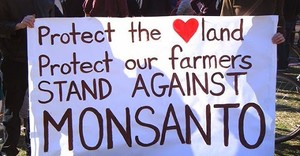 |
| (Photo: Ralph Lee Hopkins/Getty Images) |
b, Take Part: http://www.takepart.com/article/2014/08/27/whale-watching-stresses-out-whales-and-dolphins?cmpid=tpdaily-eml-2014-08-28
Watching
whales and dolphins in their natural habitats may seem like a good
alternative to seeing them in aquariums, but some scientists say that
the activity may be putting the marine mammals at risk.
Researchers presented their findings at the International Marine Conservation Congress, a symposium held in Glasgow, Scotland, last week.
“Whale-watching is traditionally seen as green tourism,” Leslie New, a Maryland-based wildlife biologist who works for the United States Geological Survey, told Nature. “The negative is the potential for disturbance.”
More than 13 million people take whale-watching trips each year, generating an estimated $2.1 billion annually.
Boat collisions might be the least of the marine mammals’ problems, according to studies presented at IMCC. The effects of whale-watching excursions are unclear, but scientists worry it may cause behavioral changes in whales and dolphins, such as not feeding or swimming away from boats, which takes energy.
Vanessa Williams-Grey, head of the Responsible Whale Watch Program at the Whale and Dolphin Conservation Society, told the BBC in 2011 that the industry could be harmful to marine mammals.
“Badly run trips can translate into all sorts of negative reactions from the whales,” said Williams-Grey. “They can stop resting or increase their respiratory rate. If they are using more energy, this will have an impact on their health.”
Other scientists champion whale watching, saying it inspires conservation efforts.
“Presentations in the symposium pointed out much good that whale watching can do if - and that’s a big if - managed appropriately and impacts are minimized or removed completely,” said Chris Parsons, a whale and dolphin researcher at Pacific Whale Foundation, a Hawaii-based nonprofit that also offers whale-watching trips.
Emmanuelle Martinez, a senior scientist with the Pacific Whale Foundation, said tourists bear responsibility for behaving properly in the presence of marine mammals.
“It is not uncommon to see people on their boats and kayaks approaching too close to the mammals, and Jet Skis doing doughnuts around a pod of dolphins,” she said. “I even witnessed a lady literally launching herself on top of a Hector’s dolphin - an endangered species - that was bowriding the boat she was on.”
“Educating the public to choose the best and most compliant tour operator and to follow guidelines is therefore very important if we don’t want to cause death by 1,000 cuts,” Martinez added.
Researchers presented their findings at the International Marine Conservation Congress, a symposium held in Glasgow, Scotland, last week.
“Whale-watching is traditionally seen as green tourism,” Leslie New, a Maryland-based wildlife biologist who works for the United States Geological Survey, told Nature. “The negative is the potential for disturbance.”
More than 13 million people take whale-watching trips each year, generating an estimated $2.1 billion annually.
Boat collisions might be the least of the marine mammals’ problems, according to studies presented at IMCC. The effects of whale-watching excursions are unclear, but scientists worry it may cause behavioral changes in whales and dolphins, such as not feeding or swimming away from boats, which takes energy.
Vanessa Williams-Grey, head of the Responsible Whale Watch Program at the Whale and Dolphin Conservation Society, told the BBC in 2011 that the industry could be harmful to marine mammals.
“Badly run trips can translate into all sorts of negative reactions from the whales,” said Williams-Grey. “They can stop resting or increase their respiratory rate. If they are using more energy, this will have an impact on their health.”
Other scientists champion whale watching, saying it inspires conservation efforts.
“Presentations in the symposium pointed out much good that whale watching can do if - and that’s a big if - managed appropriately and impacts are minimized or removed completely,” said Chris Parsons, a whale and dolphin researcher at Pacific Whale Foundation, a Hawaii-based nonprofit that also offers whale-watching trips.
Emmanuelle Martinez, a senior scientist with the Pacific Whale Foundation, said tourists bear responsibility for behaving properly in the presence of marine mammals.
“It is not uncommon to see people on their boats and kayaks approaching too close to the mammals, and Jet Skis doing doughnuts around a pod of dolphins,” she said. “I even witnessed a lady literally launching herself on top of a Hector’s dolphin - an endangered species - that was bowriding the boat she was on.”
“Educating the public to choose the best and most compliant tour operator and to follow guidelines is therefore very important if we don’t want to cause death by 1,000 cuts,” Martinez added.






 Image Credit: U.S. Geological Survey
Image Credit: U.S. Geological Survey







